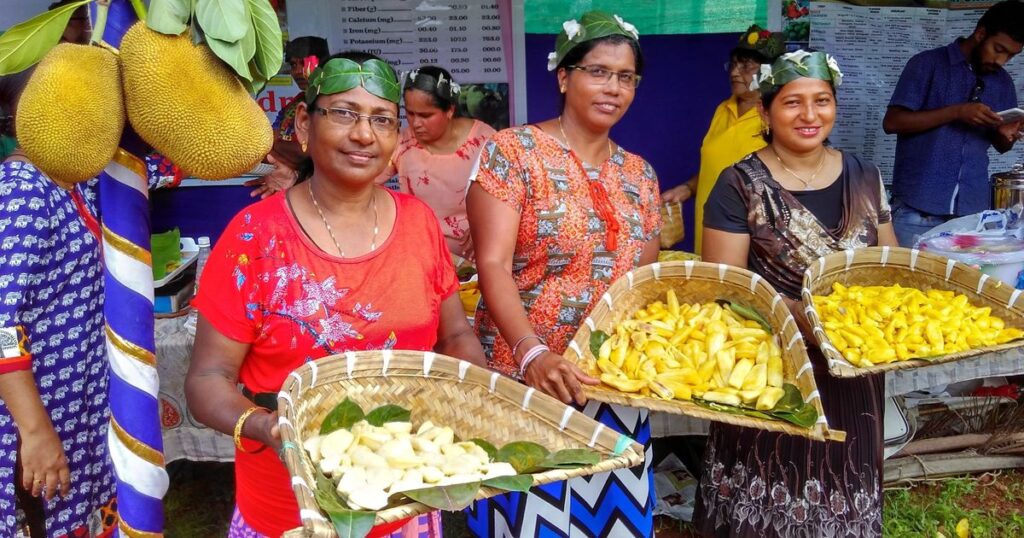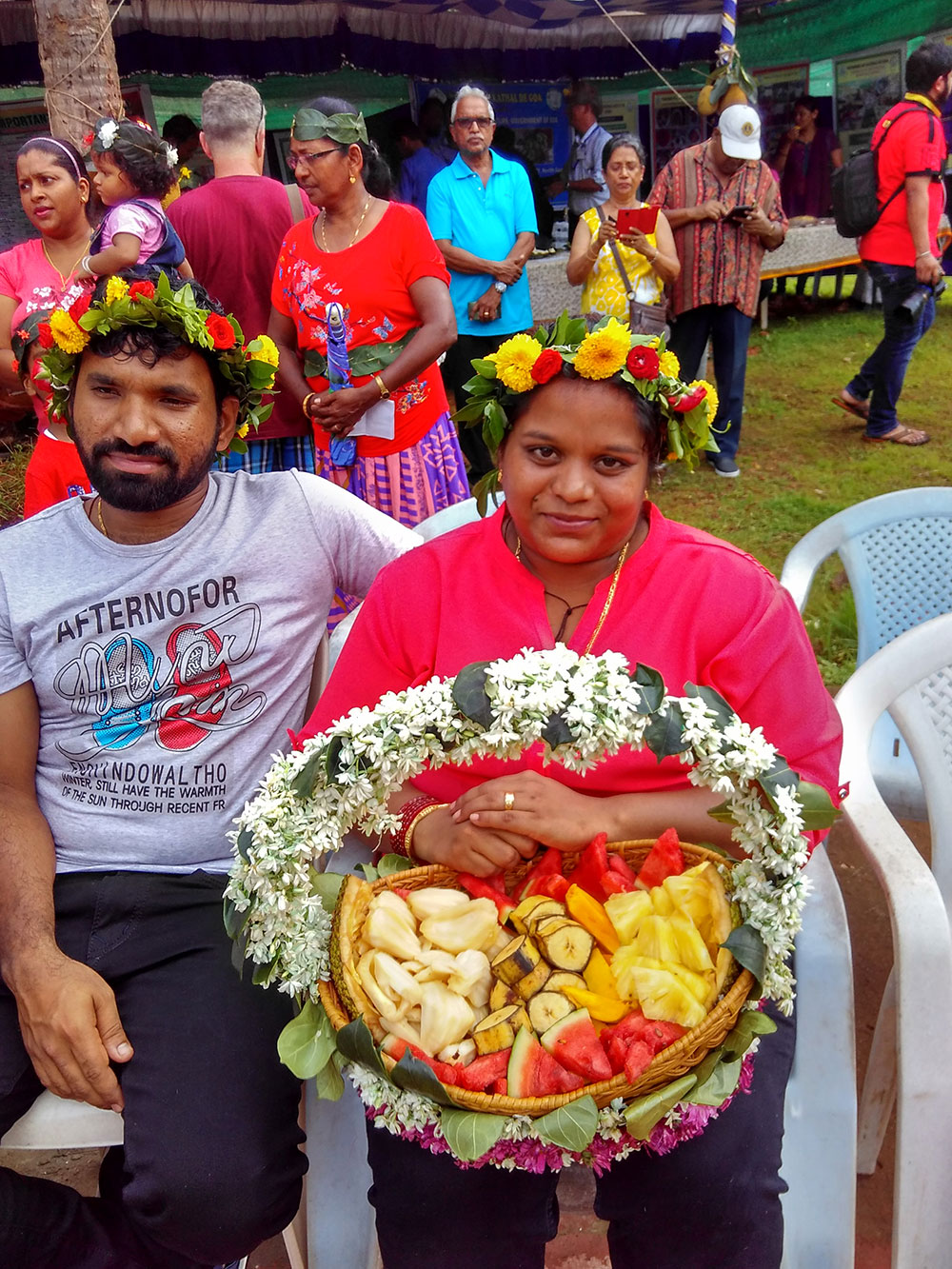
At the heart of Sanjão celebrations in Goa lies a humble but deeply symbolic element are fruits. While the joyful well-jumping and singing may steal the spotlight, it is the seasonal fruits that quietly carry the soul of the festival.
During Sanjão, homes across Goa overflow with tropical fruits, offered as a gesture of thanksgiving and shared among families, friends, and neighbors. This beautiful practice symbolizes fertility, abundance, and the blessings of a new season. As the first monsoon rains nourish the land, the fruits remind us of nature’s bounty and the joy of sharing.
Here are some of the most cherished fruits of the season and what they represent:
Jackfruit (Ponos)
One of Goa’s most prized monsoon fruits, jackfruit is often considered the king of Sanjão offerings. Its rich, sweet pods symbolize prosperity and fruitfulness. Families often serve jackfruit raw or incorporate it into dishes like pattoli, ponos fudge, or steamed jackfruit cakes.
Mango (Ambo)
Though mango season begins in summer, the late varieties still grace Sanjão celebrations. The mango is seen as a symbol of love, sweetness, and celebration, and it’s often served sliced, pickled, or added to curries and desserts.
Banana (Kelo)
Bananas are not only offered but also used decoratively, especially their leaves. Symbolizing growth and humility, bananas reflect the nurturing side of Goan households.
Pineapple (Ananas)
With its refreshing flavor, the pineapple symbolizes hospitality and vitality. It’s often sliced and served during the festival, or used in chutneys and salads.
Guava, Papaya, and Watermelon
These fruits are less ceremonial but often included in the festive spread for their vibrant color, freshness, and health-giving properties. They reflect the diversity and richness of Goa’s fruit-growing tradition.
Fruit as a Cultural Language
The practice of collecting, decorating, and distributing fruits during Sanjão is more than just tradition. It is a language of gratitude. Each fruit placed in the dali (the ceremonial basket) carries with it a prayer, a wish, and a blessing. Families prepare their dalis lovingly, adorning them with wildflowers, leaves, and homegrown produce, and often walk to the local chapel or cross to offer it to God in thanksgiving.
This act not only expresses devotion but also reconnects people with the land, the season, and the divine. It reminds us that, in Goa, food is never just food. It’s heritage, celebration, and spirit.


